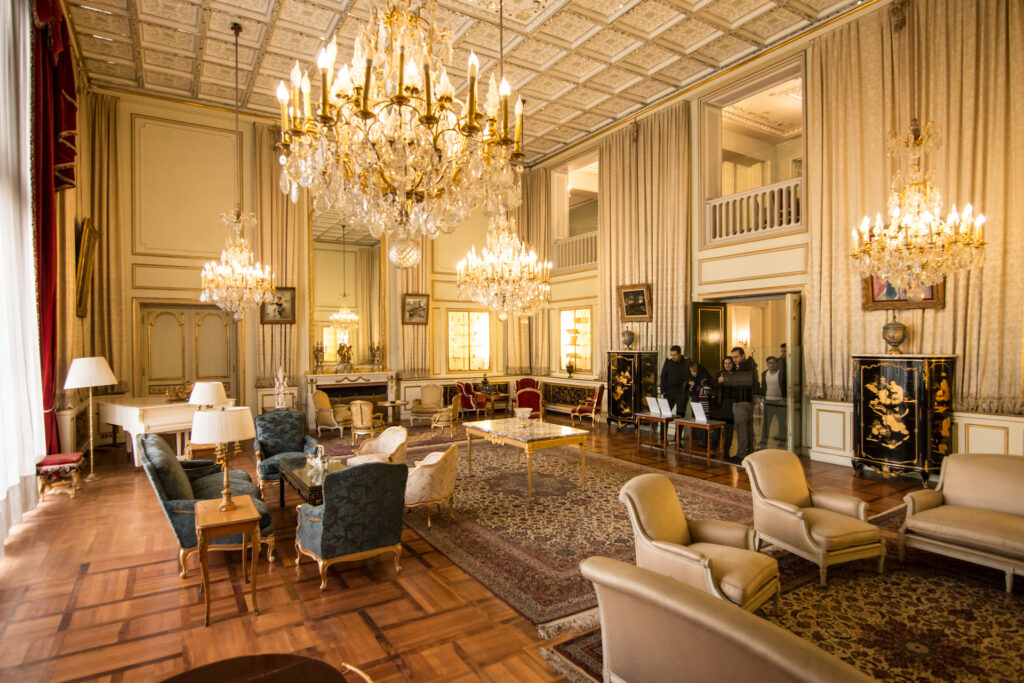Niavaran Palace Complex – An Architectural Marvel of Tehran
Niavaran Palace Complex is a treasure trove of Iranian history and culture located in the northern part of Tehran. The complex consists of several buildings, gardens, and monuments, all of which are a testament to the grandeur of the Qajar era. Built between the 19th and 20th centuries, Niavaran Palace Complex was once the primary residence of the former Imperial Family of Iran.
A Brief History of Niavaran Palace Complex
The construction of Niavaran Palace Complex began in the 19th century during the reign of Naser al-Din Shah Qajar. The complex was further expanded under the rule of his successor, Mozaffar al-Din Shah, and the area eventually became a private summer home for the Imperial Family. The complex was later used by Reza Shah Pahlavi and his son, Mohammad Reza Pahlavi, and was officially designated as a national museum in 1976.
Notable Structures and Landmarks at Niavaran Palace Complex
The buildings and gardens of Niavaran Palace Complex are divided into two parts – the Main Palace and the Annex Palace. The Main Palace consists of four structures, namely Saheb Qaranie, Jahan Nama, Ahmad Shahi, and Niavaran House, while the Annex Palace has two structures – White House and Shahvand House.
Saheb Qaranie
Saheb Qaranie is the main building of the complex and is located at the highest point of the palace. This two-story building was built in 1879 and was initially used as a reception hall and a library. It is now used as a museum, where visitors can learn more about the history of the complex and the Qajar era.
Jahan Nama
The Jahan Nama building is one of the oldest structures in the complex and was built in 1867 as a summer house. This two-story building is decorated with wood carvings, paintings, and ornate tilework, and its walls are decorated with images of plants and animals.
Ahmad Shahi
The Ahmad Shahi building was built in 1910 and is the most modern structure in the complex. It is a three-story building with a large hall on the first floor and several rooms on the other floors. The hall is decorated with paintings and ornate tilework, while the other floors are mostly used for administrative purposes.
Niavaran House
The Niavaran House is a two-story building located near the main gate of the complex. It was built in the late 19th century and is now used as a museum, where visitors can learn more about the history of the Qajar era.
White House
The White House is a two-story building located in the Annex Palace of the complex. It was built in the early 20th century and is now used as a museum, where visitors can learn more about the history of the Pahlavi era.
Shahvand House
The Shahvand House is located in the Annex Palace of the complex and was built in the late 19th century. It is a two-story building and is now used as a museum, where visitors can learn more about the history of the Qajar era.
Gardens and Monuments
The Niavaran Palace Complex is also home to several gardens and monuments, such as the Palace Garden, the Ancient Palace Garden, the Royal Mausoleum, the Saheb Qaranie Museum, and the Shah’s Tomb. These beautiful green spaces and historic landmarks add to the allure of the complex, providing visitors with opportunities to explore both the natural and architectural beauty of Niavaran.
The Palace Garden is a picturesque area surrounding the main palace buildings, featuring lush vegetation, fountains, and pathways for leisurely strolls. The Ancient Palace Garden offers a glimpse into the past with its ancient trees and tranquil atmosphere, while the Royal Mausoleum pays homage to Iran’s royal family with its majestic architecture and serene surroundings.
The Saheb Qaranie Museum and the Shah’s Tomb provide insights into Iran’s rich history and culture, housing artifacts, memorabilia, and exhibits that chronicle the lives and legacies of the country’s rulers.
Overall, the Niavaran Palace Complex stands as a testament to Iran’s architectural and cultural heritage, offering visitors a captivating journey through time. Whether you’re admiring the intricate wood carvings of Jahan Nama or wandering through the lush gardens, the complex is sure to leave a lasting impression, showcasing the grandeur and elegance of Tehran’s historic past.

